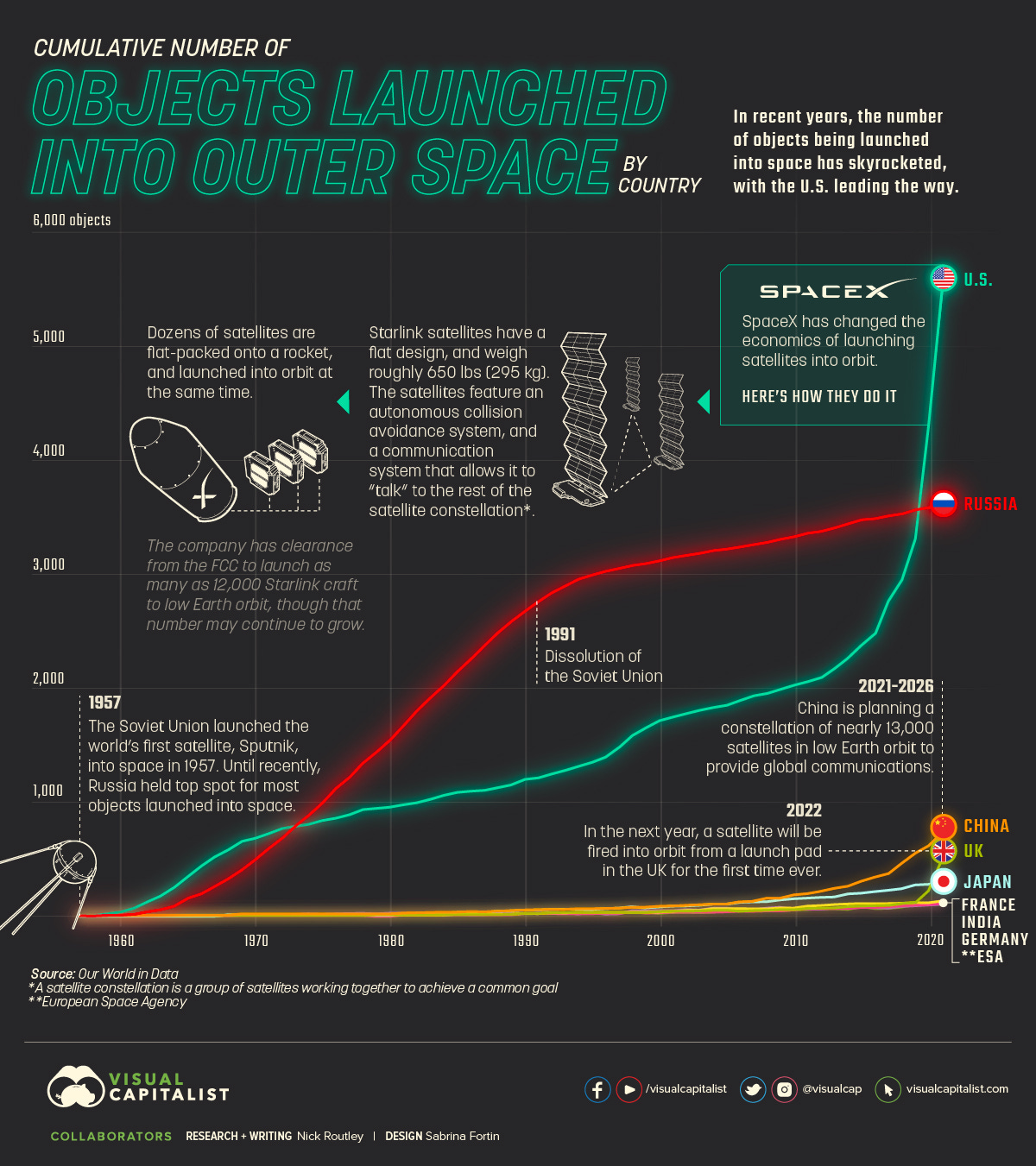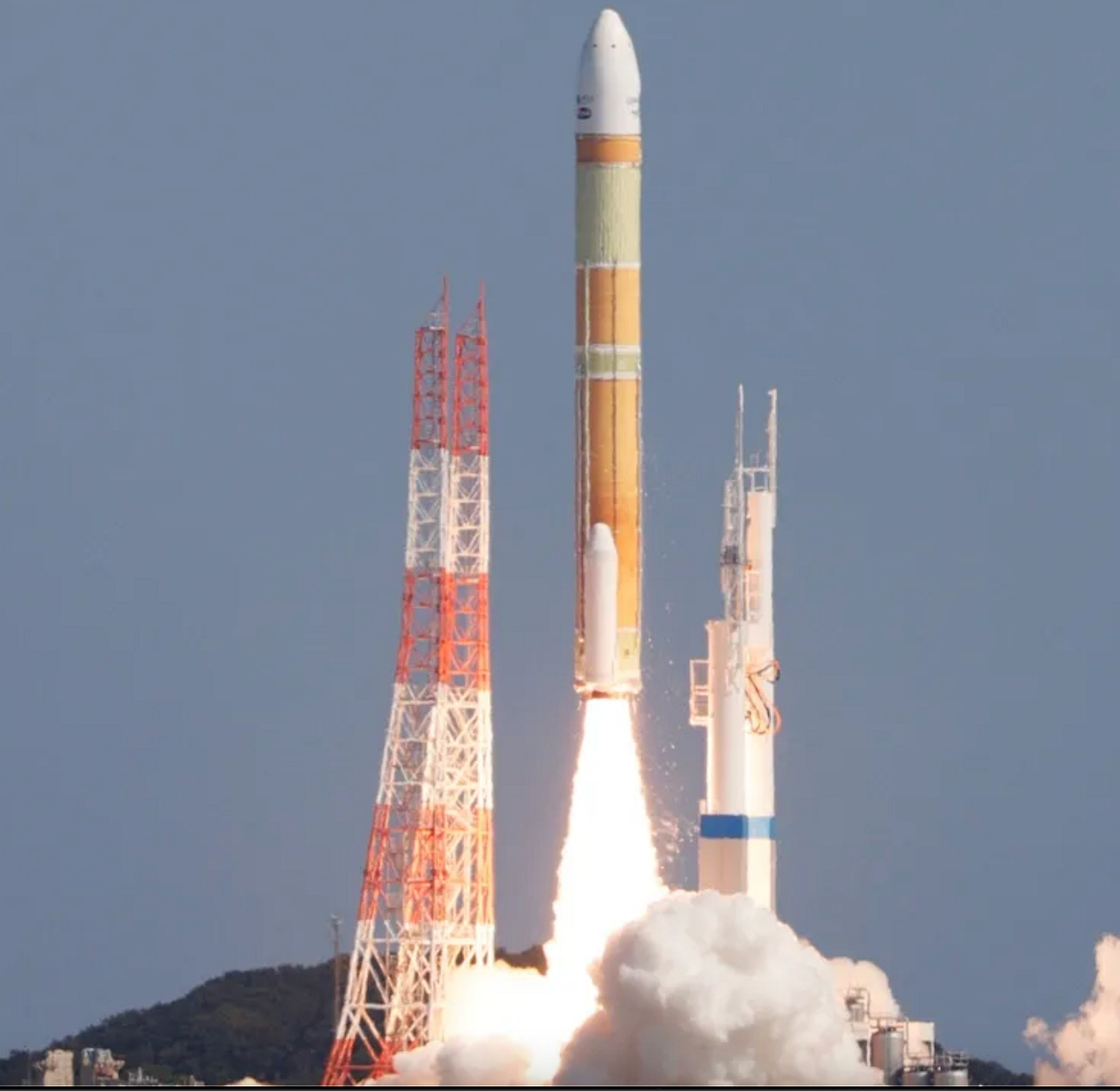We are in the midst of a second space race. This time it is not between two super powers who are competing for supremacy, but instead between many advanced nations who seek a combination of military power, commercial opportunities, and national pride. The first space race led to a boom in scientific achievement for humanity. The second space race, if done within the confines of an agreed upon set of rules, can lead to an even larger technological, scientific, and economic boom for humanity. The sky is the limit.
Articles Highlighted this Week:
Russia’s Bid for an Orbiting Nuclear Weapon Highlights a New Space Race (Bloomberg)
'Odysseus' successfully launches in attempt to put first private lander on the moon (NBC)
Japan’s Newest Rocket Offers Hope to Battered Space Program (Bloomberg)
Science and Technology:
Russia’s Bid for an Orbiting Nuclear Weapon Highlights a New Space Race (Bloomberg)
TLDR: Rep. Mike Turner (R-Ohio), the Chair of the House Intelligence Committee, gave a warning about new Russian military space capabilities this week. President Biden has now confirmed the intelligence, but downplayed the threat.
Why is it important? The success of SpaceX of being able to effectively and cheaply get humanity into orbit is causing leaders to actively pursue their ambitions for space. Most American attention has been on potential science and commercial opportunities in space, whereas the Russian’s have been focused on the military opportunities space can offer.
As the war in Ukraine continues to occupy the vast majority of the Russian military’s attention, we are reminded that Russia is still a military superpower that is constantly investing in and developing new military capabilities. The most recent example of this is the stark warning that came from top U.S. officials who warned that Russia may be on the cusp of deploying a new nuclear super weapon in space.
Vladimir Putin first unveiled the idea of superoruzhie (super-weapons) in 2018 as Russia’s strategy to develop asymmetric capabilities to negate the conventional military advantage NATO has over it. Space is just one dimension that Russia has been investing in, but increasingly investment in space is growing in importance. After the fall of the Soviet Union in 1991 the Russian activity in space, as well as the rest of the economy, fell into disarray and the lead Russia had on all other countries began to diminish (eventually being overcome by the U.S.)
The first space race was started in 1957 when the Soviet Union successfully launched the first satellite into orbit. This was the infamous “Sputnik Moment” that led to the creation of NASA the next year and eventually the successful Apollo 11 mission to the moon in 1969. The space race was propelled by the strategic military calculations of the Cold War, but the commercial/technological benefits that came from it forever changed humanity. Economists have estimated that every $1 invested in NASA during the period of the Apollo missions contributed $7 to the U.S. economy. NASA has a long list of direct technologies that needed to be invented to get humanity to the moon that are still in use today. The space race was a scary time for Americans (the Soviets were seen as technologically superior in space for most of the period), but by taking it seriously both nations propelled themselves and the world to heights unimaginable to the people who came before them.
We are now in the second space race. It was estimated that the total space economy in 2022 was $549B and is expected to grow extremely quickly in the years to come. Led by the success of SpaceX and Blue Origin, the current space race is being led and dominated by American private companies. NASA is still important, but the bulk of funding for space in the last decade has come from private investors and not the government. This has given the U.S. a big advantage that the rest of the world is now trying to catch up with.
The Russians still have the second most formidable space program in the world. What they do matters. Who they share their technology with matters. As the U.S. goes out in pursuit of commercial opportunities in space, it must not forget that its main competitors still primarily see space as a military domain where it could potentially gain asymmetric capabilities over its adversaries. Space is the ultimate frontier for humanity to continue to expand into and progress through. The need to define the rules of the game will only grow as more governments and companies begin more regularly operating in space. The world powers adopted the Law of the Sea in 1982 which laid down rules for the navigation and use of resources of our oceans. It also led to globalization and the biggest boom in economic activity in world history. Today we have the same opportunity of laying the groundwork of international rules in space. The alternative will be every country for themselves and a space arms race that might lead to multiple countries fielding orbiting nuclear weapons around the world at all times. The need to work together so we can all benefit only grows in importance as the capabilities of all nations rise.

'Odysseus' successfully launches in attempt to put first private lander on the moon (NBC)
TLDR: A moon lander developed by Intuitive Machines, a Houston-based company, was launched from the Kennedy Space Station this week hoping to become the first commercial built spacecraft to land on the moon.
Why is it important? If successful, it would mark a big success for NASA’s new strategy of facilitating the space economy by awarding contracts to private companies to deliver NASA payloads to the moon.
Odysseus successfully landed on the moon! According to NASA,
Following a launch on Feb. 15, Intuitive Machines’ Odysseus lander touched down in the Moon’s south polar region on Feb. 22 and has since transmitted valuable scientific data back to Earth. Odysseus took six NASA payloads along for the ride and their data will prepare us for future human exploration of the Moon under Artemis.
This landing marked the United States’ first lunar landing since Apollo 17, as well as the first landing as part of our Commercial Lunar Payload Services initiative, which aims to expand the lunar economy to support future crewed Artemis missions.
We are back baby! NASA has identified the moon as a focus for the future of the American space program. The Odysseus mission and the Commercial Lunar Payload Services initiative that paid for it is the first step in getting the U.S. back to the moon with the aim of building a moon base where scientists (and eventually military and commercial folks) can operate from which will advance both U.S. and global interests.
Japan’s Newest Rocket Offers Hope to Battered Space Program (Bloomberg)
TLDR: Japan successfully launched two satellites into space on their new rocket.
Why is it important? Japan’s space program has been struggling as of late. The successful launch of it’s new rocket can help Japan compete in the commercial launch business currently dominated by SpaceX.
The H3 rocket is meant to compete with the Falcon 9, the SpaceX rocket best known for its reusability. The H3 is built by Mitsubishi Heavy Industrial and the emphasis on reusability is a major key for the company which it says can reduce up to 90% of the cost of launch.
Japan has struggled with the development of its new rocket with multiple failed launches before the success last month. Also earlier this year, Japan became the 5th country to land on the moon. The potential to win market share and be a key partner for countries without rocket launch capabilities in Asia is the opportunity that Japan is chasing. The Japanese, Indian, and Chinese space programs have all been successful and are in the midst of competing in an Asian space race. All countries have publicly committed increased resources for their respective space programs.
Japan has the longest history of a space program between the Asian giants and the H3 represents the closest any of the countries have gotten to a rocket that can compete with SpaceX. The second space race is going to include competition from more countries who have the will and means to challenge the dominance of both the U.S. and Russia. The Asian giants (as well as the EU and Israeli space programs) are going to be key in creating a space operating framework and pushing the boundaries of humanity ever outward.



Missing two weeks of your newsletters, it was good to read your new content. I like how focused on one particular industry and covered multiple perspectives from the countries involved in the new developments as well as economics and expansion as the industry as the whole. Nice job, Alec!
Thorough insight.